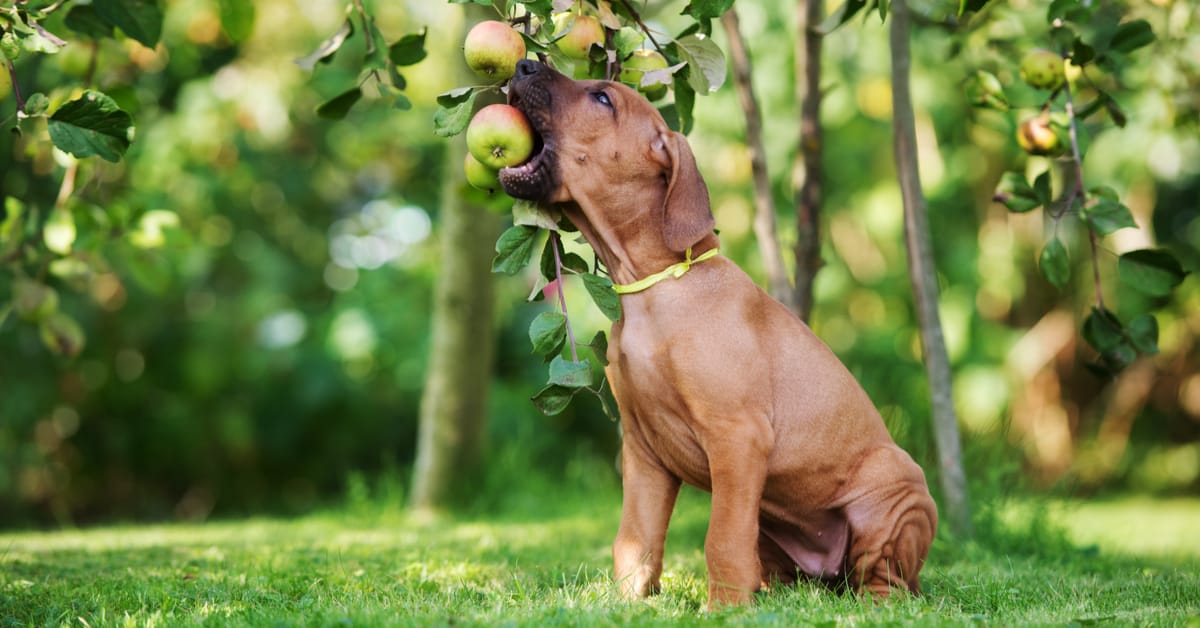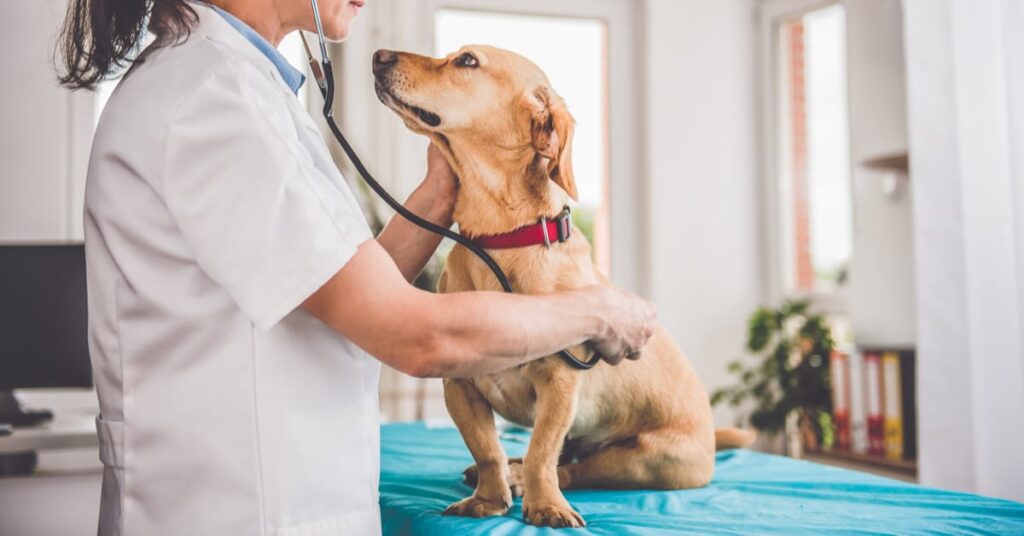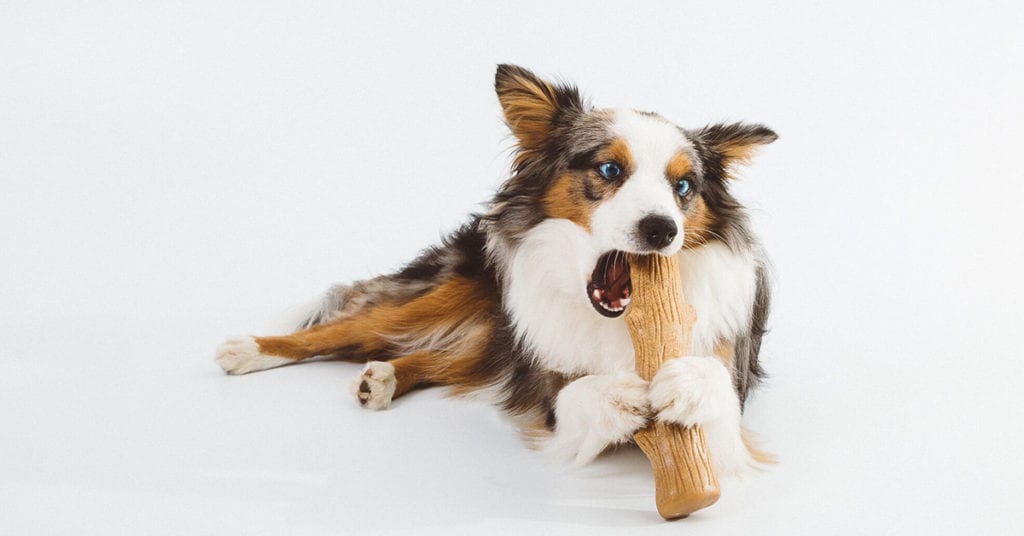I can think of a few medical emergencies more frightening for pet owners than a choking dog. You may only have minutes to save your beloved pet, and the signs your dog is choking can be quite distressing, which makes it even harder to think about what you should do. Knowing ahead of time what to do if your dog is choking could save its life.
As frightening as this situation may be, it won’t do your dog any good if you panic. It will only distress him even more as he picks up on your fear. But what exactly should you do? Let’s explore signs your dog is choking versus having another problem, and some basic first aid you can render to help your best friend out.
Signs Your Dog Is Choking
One of the most recognizable signs your dog is choking is coughing. Of course, if he’s coughing, he’s trying to expel the foreign object from his airway. You might also notice, however, that he is pawing at his mouth or head.
He’s also likely to appear panicked himself as he tries unsuccessfully to inhale air into his blocked windpipe. Other signs of choking include drooling, gagging, and even retching in an attempt to remove the blockage. If his airway remains blocked long enough, your choking dog may also become unconscious.
What Causes a Dog to Choke?

There are many ways a dog can choke, and there are some it might be difficult to prevent. There are some things, however, that you can watch out for. Here are some of the most common causes of a dog choking:
Foreign objects
This is probably the biggest thing you should be worrying about because dogs are curious about everything around them. They are constantly sniffing and even mouthing objects in their environment. It’s not surprising that every now and again, they might inhale something they’re chewing on and choke.
It may not even be something they shouldn’t have. They can also choke on chew toys or other toys they normally play with; basically, anything that is smaller than their windpipe is a potential choking hazard. Even dog food can be a possible choking hazard. Most dog foods are made for dogs of a particular size, but if you have a small dog and a large dog, it’s possible the small dog could get into the other dog’s food and choke.
For that reason, it’s best if you can supervise their eating and anything they might chew on. Take any chew toys that are too small away from your dog to keep them from choking, and watch them when they’re playing with their toys
Collapsing Trachea
This is a common problem, particularly in older, small dogs. A collapsing trachea usually results from the flattening of the cartilaginous rings that support the trachea and keep it open. The cause is not well understood, but it may be congenital and it may be a problem that gets worse with age.
In the case of collapsing trachea, the Heimlich maneuver might not help because the organ itself is collapsing, but if your dog also has something blocking his airway, the procedure can still save his life. It might also help to give him rescue breaths as described below.
Constricting Collars
Constricting collars are another thing that can cause your dog to choke. The problem isn’t so much that the collar itself chokes your dog, as it is that the collar constricts the airway and esophagus so that the dog cannot swallow properly. That can cause them to swallow food into their trachea instead of the esophagus, thereby choking your dog. To prevent this, make sure you can slip two fingers under the collar.
What to Do If Your Dog Is Choking

If your dog is showing signs of choking, you can’t wait to get to the vet; you’ll need to take immediate action to help him. The first thing to do is check inside your dog’s mouth for any food or foreign objects that might be blocking his airway.
If you do see something in your dog’s mouth, you can try to swipe it sideways out of his mouth to clear his airway, but you have to be careful because your dog is likely panicking and he’s going to be retching, gagging, and coughing. He could easily bite down on your hand without even realizing it.
It’s also important that if you see a bone lodged in your dog’s throat, you should not try to remove that. Bones can cause injuries to your dog’s throat, and so, it’s better to get him to the emergency clinic where they can remove that while he’s sedated.
If you can see some other kind of blockage in your dog’s airway, but you can’t remove it, you’ll want to get him to the emergency vet as quickly as possible, but you might also try the Heimlich maneuver on your dog.
Heimlich Maneuver for Dogs

If you can see a blockage in your dog’s throat, but you can’t remove it, you’ll need to try the Heimlich maneuver. There are two different methods described below as detailed by the Animal Emergency Center in Memphis. Which one you use depends on your dog’s size.
Heimlich Maneuver for Smaller Dogs
Take your dog and hold him on your lap, and then turn him onto his back. Use the palm of your hand to apply pressure just beneath his rib cage and sternum (breastbone). Push firmly inward and upward five times using a thrusting motion. Then roll your dog onto his side and look inside his mouth to see if you successfully dislodged the foreign object causing the blockage.
Heimlich Maneuver for Medium-Sized and Large Dogs
If your dog is in a standing position, wrap your arms around him and join your hands together at his abdomen. Make a fist with your hands and firmly and swiftly push up and forward five times with a thrusting motion. This is very similar to how you would perform the Heimlich maneuver in humans.
This should dislodge the blockage, but check your dog’s mouth and airway to remove any loose food or parts of the foreign object that was causing the problem.
If your dog is laying down, place one of your hands on his back and use your other hand to push or squeeze his abdomen in an upward and forward motion towards his spine. After doing so, check your dog’s mouth for the object to ensure he doesn’t swallow it or have problems again.
If this doesn’t dislodge the blockage, you can also try lifting your dog up by his back paws into what is called the ‘wheelbarrow pose’ with his head down and his legs up in the air. Administer five sharp blows with your open hand to your dog’s back between his shoulder blades. Check his mouth again to see if you successfully removed the blockage.
You can also leave your dog in the standing position and give him five sharp taps between the shoulder blades. If all of this doesn’t successfully remove the blockage from your dog’s airway, and he falls unconscious, it might be necessary to administer rescue breaths while you rush him to the emergency clinic.
How to Give Your Dog Rescue Breaths
If you are unable to dislodge a blockage from your dog’s airway, you might need to administer rescue breaths. To do this, follow these steps:
- Close your dog’s mouth and breathe directly into his nose with your mouth. Be sure that you can see his chest expanding as you do this.
- Continue rescue breathing by administering one breath every five seconds.
What to Do After Your Dog Has Been Choking

Even if you have successfully managed to remove the foreign object that was blocking your dog’s airway and he is breathing without problems, you will still want to have him checked by your veterinarian. If your dog was unconscious at any point in time, it may be necessary to take him to the emergency veterinarian, but even if not, you’ll want to get him in the next day for proper veterinary care to ensure nothing was seriously damaged.
The reason for this is that some foreign objects can cause damage to your dog that you don’t see. Damage to the trachea or other parts of your dog’s oral cavity can develop into other problems if the area becomes infected or fails to heal properly.
How to Prevent Future Choking

The first thing to do to prevent choking is to remove anything that might be a potential choking hazard. This includes things like chew toys and bones. You’ll also want to make sure you only give your dog toys that are sturdy and can withstand his level of chewing. This can prevent them from breaking into smaller pieces that can get lodged in your dog’s throat.
Additionally, you’ll want to make sure you are feeding dog food that is formulated for your dog’s size, particularly if you have a small dog. If possible, you might want to monitor your dog when he’s eating. If he eats too fast, he can easily inhale a piece of food. A slow feeder dog food bowl can help to keep that from happening, but it’s also not a bad idea to just keep an eye on him when he’s eating.
Aside from your dog’s toys, you’ll want to make sure that children’s toys are kept out of your dog’s reach since many of these can be potential choking hazards too.
Final Thoughts

As a dog owner, there’s nothing more frightening than the thought of watching your dog choking and not being able to do anything to help. You won’t be able to get him to the emergency clinic in time to save him in most cases, so knowing what to do can give you peace of mind.
It’s also important, however, to take preventative measures to eliminate potential choking hazards from your dog’s environment. That way, you won’t have to be in the position of rendering first aid. But if he does show signs of choking, it’s better to know what to do so you won’t panic and can help your best friend when he’s in need.

